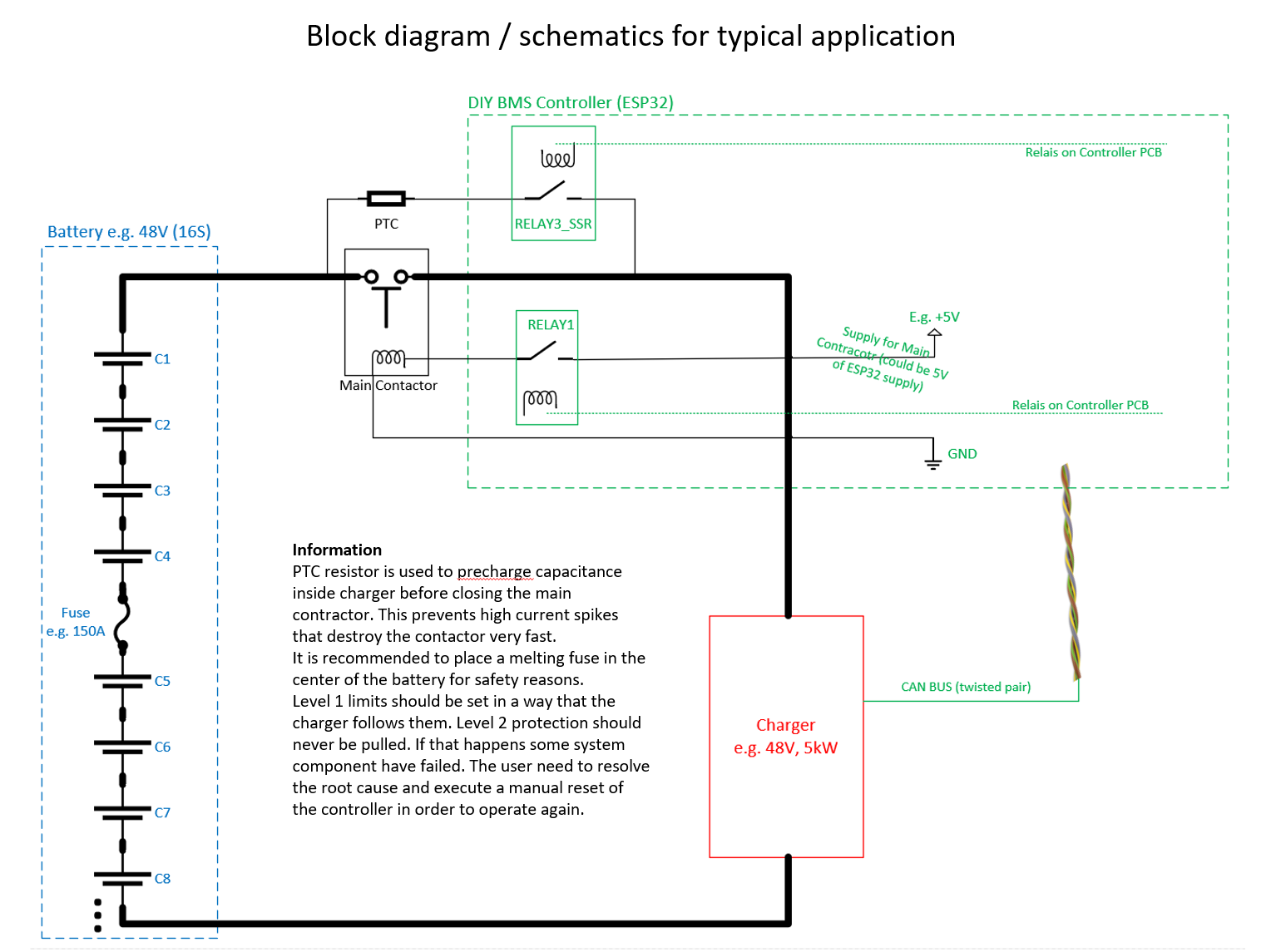no this is not good it is good how it is now fully automatic, a manual reset of the controller is not usefull. you have to disconnect the charger or the load seperatly this is the task of a bms. if you have to disconnect a main contactor you can do so now without problems you need only a precharge circuit for the connection again
i can understand if someone need a additional precharge relay rule but the other rules should stay as they are
i think the others would not like this too and they dont need it, there is other work to do that is more important, like the dynamic balance voltage enhancement
I would also like to contribute something to this DIY project as I'm using it for my own DIY battery (48V 400Ah; 16S2P [one controller w/ 32 module boards]).
On the attached picture you can find a new concept that would be little more forward towards PV battery usage. The Rules page and Rules logic need to be adapted heavily but I think it would also simplify things and improve safety by making the config easy/better to understand.
Please join the discussion to improve this idea so that we have an straight forward concept that improves this project - if we decide to implement it.

